|
|
Cheylard-l'Evêque in Lozère |
|

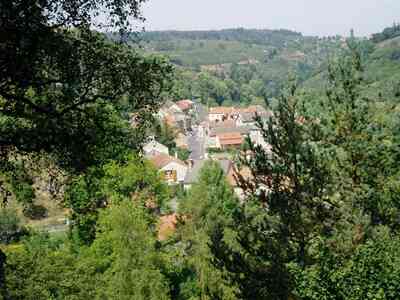 The municipality of Cheylard-l'Evêque was created in 1888 by detachment from Chaudeyrac. In a small, still-preserved valley where one can easily imagine how the people of Lozère lived in the last century, Cheylard-l'Evêque offers all the tranquility and charm of a small paradise.
The municipality of Cheylard-l'Evêque was created in 1888 by detachment from Chaudeyrac. In a small, still-preserved valley where one can easily imagine how the people of Lozère lived in the last century, Cheylard-l'Evêque offers all the tranquility and charm of a small paradise.
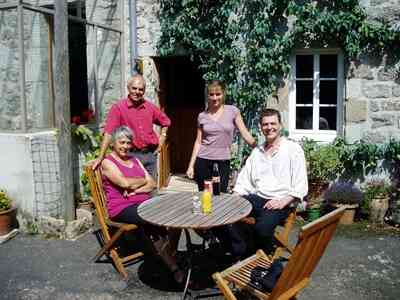 The commune of Cheylard-l'Évêque takes its name from an ancient Occitan term meaning "strong house" or "farm on a promontory," which is linked to a similar word designating a redoubt or a small fortress. Locally, the inhabitants simply call it Le Cheylard. The addition of the word "Évêque" comes from the acquisition of the village by Guillaume VI, the bishop of Mende, in 1321, when he purchased it from the lord of Randon. The forest surrounding the village played a crucial role in its development. Initially, the village was established on a promontory before moving to the foot of the rock in the 19th century. In 1888, it became a distinct commune after being detached from Chaudeyrac.
The commune of Cheylard-l'Évêque takes its name from an ancient Occitan term meaning "strong house" or "farm on a promontory," which is linked to a similar word designating a redoubt or a small fortress. Locally, the inhabitants simply call it Le Cheylard. The addition of the word "Évêque" comes from the acquisition of the village by Guillaume VI, the bishop of Mende, in 1321, when he purchased it from the lord of Randon. The forest surrounding the village played a crucial role in its development. Initially, the village was established on a promontory before moving to the foot of the rock in the 19th century. In 1888, it became a distinct commune after being detached from Chaudeyrac.
Winter is harsh in Cheylard, and the small roads are often blocked by snow. The inhabitants support each other during these long snowy months to do grocery shopping, fetch bread, collect the mail, or clear the roads. The large government forest of Mercoire provides all the wood the residents need. In September-October, everyone is out for "mushrooms": porcini, blood mushrooms, chanterelles, sheep's foot, etc. Many tourists come especially from the towns of Gard and Haute-Loire. There is also trout fishing in the Langouyrou that connects to Langogne. It is a true little village outside of time.
A small bistro located in the village square is run by Josette and Alain. Josette takes care of the service in a relaxed and friendly manner; Alain, a retired forest ranger, tends to the flowers on the terrace, the wood, and the mushrooms.
I often find myself stopping by to say hello on my way back from Langogne. A always genuine and warm welcome! Alain knows the area well and the countless hiking paths in the forest of Mercoire or Moure de la Gardille where one can reach the sources of the Allier and Chassezac at the water divide between the Mediterranean Sea and the Atlantic Ocean.
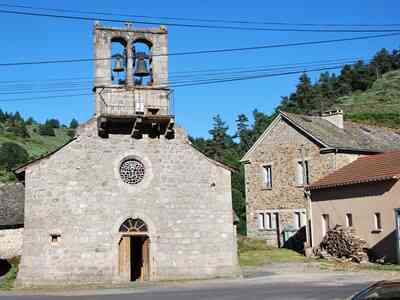 Hikers from large cities are transported back to the time of Robert Louis Stevenson, who stopped at the village.
"I set out for Cheylard-l'Évêque, at the edge of Mercoire Forest. I had been told that a man could make this journey in an hour and a half, and it did not seem too ambitious to imagine that a man burdened with a donkey could cover the distance in four hours. Throughout the ascent to Langogne, rain and hail succeeded one another; abundant and swift clouds, some bringing curtains of heavy showers, others in luminous masses, as if to announce the snow, whipped from the north and followed me on my path, the wind cooled regularly but slowly. I soon found myself outside the cultivated basin of the Allier, far from the work oxen and other rural scenes." Robert Louis Stevenson, Voyage Journal in Cévennes.
Hikers from large cities are transported back to the time of Robert Louis Stevenson, who stopped at the village.
"I set out for Cheylard-l'Évêque, at the edge of Mercoire Forest. I had been told that a man could make this journey in an hour and a half, and it did not seem too ambitious to imagine that a man burdened with a donkey could cover the distance in four hours. Throughout the ascent to Langogne, rain and hail succeeded one another; abundant and swift clouds, some bringing curtains of heavy showers, others in luminous masses, as if to announce the snow, whipped from the north and followed me on my path, the wind cooled regularly but slowly. I soon found myself outside the cultivated basin of the Allier, far from the work oxen and other rural scenes." Robert Louis Stevenson, Voyage Journal in Cévennes.
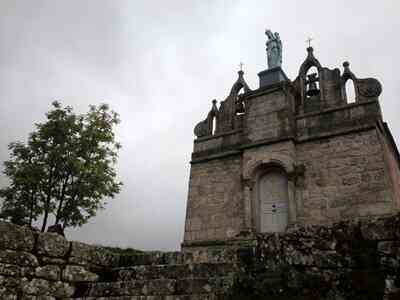 The Mercoire forest is a vast woodland area, rich in biodiversity. Its majestic trees, including oaks, beeches, and firs, stretch for miles, creating an enchanting landscape. The air is pure, and the song of birds resonates throughout the underbrush. Hikers can explore marked trails that wind through the forest, allowing them to admire the local fauna – deer, wild boars, foxes, and a variety of migratory birds. It is a place where it is good to get lost, listen to nature, and let oneself be enveloped by the surrounding serenity.
The Mercoire forest is a vast woodland area, rich in biodiversity. Its majestic trees, including oaks, beeches, and firs, stretch for miles, creating an enchanting landscape. The air is pure, and the song of birds resonates throughout the underbrush. Hikers can explore marked trails that wind through the forest, allowing them to admire the local fauna – deer, wild boars, foxes, and a variety of migratory birds. It is a place where it is good to get lost, listen to nature, and let oneself be enveloped by the surrounding serenity.
Near the forest lies the Abbey of Mercoire, a historic building rich in history. Founded in the 12th century, it was a place of prayer and devotion for the monks of that time. Its stone construction brings rustic charm, and its architecture reflects Romanesque influences. Although the abbey is no longer inhabited by monks, it remains a symbol of spirituality and peace.
At the top of the rock, a chapel dedicated to Notre-Dame de toutes les Grâces offers a panoramic view of the village and the surrounding forest. It is a small jewel that breathes history and spirituality. Although it is not as famous as some great cathedrals, it has its own charm and a soothing atmosphere that attracts the curious and the believers. Built in 1862, it was erected at a time when Catholic devotion was very present in the region. The parish church is also remarkable, as its bell tower originates from the Abbey of Dames de Mercoire and dates back to the 12th century.
The chapel has often served as a gathering place for the inhabitants, especially during religious festivals. Its architectural style reflects local influences, with stones and materials found nearby. If you get closer, you can admire the details that make it a unique place. The interior is often simple but touching, with elements that decorate the altar and the walls. Religious works, such as crucifixes and statues of saints, tell stories of faith and devotion.
***
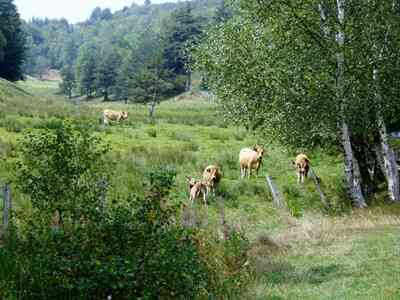 Terror in Gévaudan
Terror in Gévaudan
June 1764, near Langogne, on the banks of the Allier, in what will one day become the department of Lozère. In this harsh land of Gévaudan, a late blooming attempts to erase the lingering frost of winter. The sun, finally generous, has regenerated the lush grass of the common meadow, not far from the village.
That morning, a cowherd leads her modest herd to pasture. The cows follow her without being asked too much: the dogs bark — all is well. But at midday, while the woman is consuming her snack, she notices a sudden nervousness among her dogs: "Another fox," she thinks. "Or maybe wolves? No, wolves wouldn't venture this close..." Yet, the morning growls get louder. Vaguely worried, the cowherd decides to gather her herd.
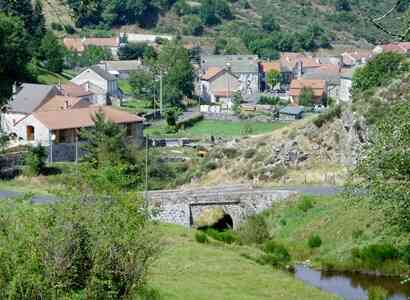 From then on, everything happens very quickly: the unfortunate woman doesn't even have time to see her dogs flee, tails down: she feels assaulted, thrown to the ground by the brutal force of a predator. However, against all odds, it is her cows that will save her: believing perhaps their calves are in danger, the horned beasts do charge at the toothy beast, which, without really insisting, abandons its prey and disappears!
From then on, everything happens very quickly: the unfortunate woman doesn't even have time to see her dogs flee, tails down: she feels assaulted, thrown to the ground by the brutal force of a predator. However, against all odds, it is her cows that will save her: believing perhaps their calves are in danger, the horned beasts do charge at the toothy beast, which, without really insisting, abandons its prey and disappears!
Precious testimony: in the evening, the cowherd from Langogne will personally inform the very first investigators of the case: "The beast that attacked me looks like a big wolf, but it is not one. Its head is bigger, more elongated. It is reddish and has a black stripe the whole length of its back. It didn't seek to attack the cattle; it was me it wanted to devour!" Some locals shiver as the peculiar portrait of the attacker is repeated, from home to home: what kind of animal could this be? "The farmer must have come across a big wolf, and her imagination has woven the rest": such was the common opinion. Nonetheless, they remain vigilant, and some begin to wonder who, in case of need, could come to the aid of the inhabitants of a very isolated, very wild land, riddled with granite outcrops and thick, dark forests. Faced with the "creature of the devil," the inhabitants have only their faith and courage.
Shortly thereafter, in Ubas, farmers discover the corpse of Jeanne Boulet, fourteen years old. Partially devoured... The parish priest notes in his register, as a prayer: "Buried without sacrament, killed by the fierce beast." Note that he no longer speaks of a wolf... Later, in the summer, on August 8, the beast attacks a small shepherdess from Masméjan d'Allier. Lumberjacks working on the opposite hill suddenly saw the sheep going down the slope, panicked — and all alone; curious, they cross the valley and discover the unthinkable: the body of the poor shepherdess has been hideously mutilated.
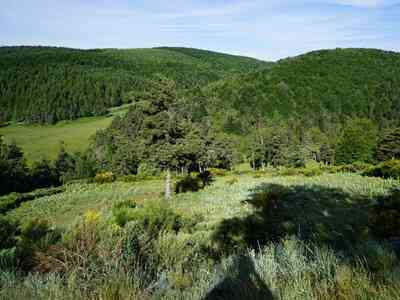 This time, the population is outraged: and anger doubles when, two weeks later, a fifteen-year-old boy, also a cowherd, is torn to pieces near Cheylard-l'Evêque. Now, tongues begin to loosen: indeed, these three victims would not be the first... There have been others, as early as March and April. Now it is time to act. But how? By organizing hunts... In vain.
This time, the population is outraged: and anger doubles when, two weeks later, a fifteen-year-old boy, also a cowherd, is torn to pieces near Cheylard-l'Evêque. Now, tongues begin to loosen: indeed, these three victims would not be the first... There have been others, as early as March and April. Now it is time to act. But how? By organizing hunts... In vain.
On September 1, a fifteen-year-old boy is slaughtered in turn, near Chaudeyrac. Fourteen years, fifteen years... The beast seems to prefer tender meat. However... On September 6, it attacks a mature woman, a farmer who was working in her vegetable garden in the hamlet of Estrets. It leaps at her throat and bleeds her within minutes. Villagers, alerted by the screams, rush to her aid — but too late. The poor woman has succumbed... And this time, the animal has approached the closest to the houses... Could it be that it fears nothing? After the surprise, and then the anger, it is now anxiety that grips the local population. The hunts are doubled, and the authorities are called: it must stop!
To calm minds, the king's representative in the province agrees to dispatch a detachment of fifty-seven dragoons on site — to say a small army. And this, for a single wolf? The population wonders, sighs, shrugs...
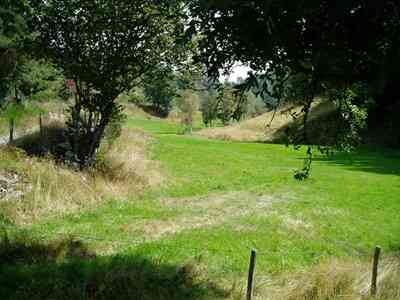 However, these dozens of soldiers, despite being aided by highly motivated farmers, beat and re-beat the woods, scout the thickets, rake the valleys, but nothing works. The beast remains unfound — until it makes headlines again, but on the Margeride side! Indeed, on September 20, a twist of fate: young shepherds, stationed in the meadows between Le Luc and Le Cheylard l'Évêque, suddenly see their dogs run towards the edge of a wood and leap on a large predator: an impressive wolf. The young men lend a hand to the dogs, even managing to kill the beast and drag its carcass back to the priest of Luc. There is no doubt in their minds: they have finally killed the beast.
However, these dozens of soldiers, despite being aided by highly motivated farmers, beat and re-beat the woods, scout the thickets, rake the valleys, but nothing works. The beast remains unfound — until it makes headlines again, but on the Margeride side! Indeed, on September 20, a twist of fate: young shepherds, stationed in the meadows between Le Luc and Le Cheylard l'Évêque, suddenly see their dogs run towards the edge of a wood and leap on a large predator: an impressive wolf. The young men lend a hand to the dogs, even managing to kill the beast and drag its carcass back to the priest of Luc. There is no doubt in their minds: they have finally killed the beast.
False joy! Six days later, it's a thirteen-year-old girl who is gruesomely slaughtered... The hunts, the chases, the tracking multiply, mobilizing more and more people — still in vain! Each week will now bring its share of mangled bodies — mostly those of young girls and teenagers — sometimes trunks without heads, entrails opened, and limbs scattered. Reports accumulate at the province's intendant's office, obviously overwhelmed by such carnage. Around him, people wonder: what if it wasn't a wolf? After all, it could be a bear... Or a large lynx...
For Christmas 1764, the bishop of Mende himself ascends the pulpit and admonishes his faithful: according to him, the beast embodies the vengeful arm of God, which seeks to combat the excesses of a population that has wallowed for too long in sin... The prelate calls for general penance and a resurgence of prayers. The beast, in his mouth, has become the exterminating angel, God's scourge whose aggressions fascinate an increasingly populous society, now prone to all sorts of fantasies. For two months, the holy sacrament has reigned on the altars of churches, to protect parishes... But God remains deaf to the pleas of all those peasants who seem abandoned to their fate. They organize, they equip themselves with spears, sickles, march together, and the shepherds, when they can, attempt to group together.
Former holiday hotel with a garden along the Allier, L'Etoile Guest House is located in La Bastide-Puylaurent between Lozere, Ardeche, and the Cevennes in the mountains of Southern France. At the crossroads of GR®7, GR®70 Stevenson Path, GR®72, GR®700 Regordane Way, GR®470 Allier River springs and gorges, GRP® Cevenol, Ardechoise Mountains, Margeride. Numerous loop trails for hiking and one-day biking excursions. Ideal for a relaxing and hiking getaway.
Copyright©etoile.fr